"We must endeavour to introduce a little order into this business, or at least sense into a great deal of it. But what is sense without order? We must try to find some method of arriving at some sort of order - one that will at least enable us to escape from this vagueness in the design of colour", opined Amédée Ozenfant in 1937.1
And had an idea or two as to the how.......
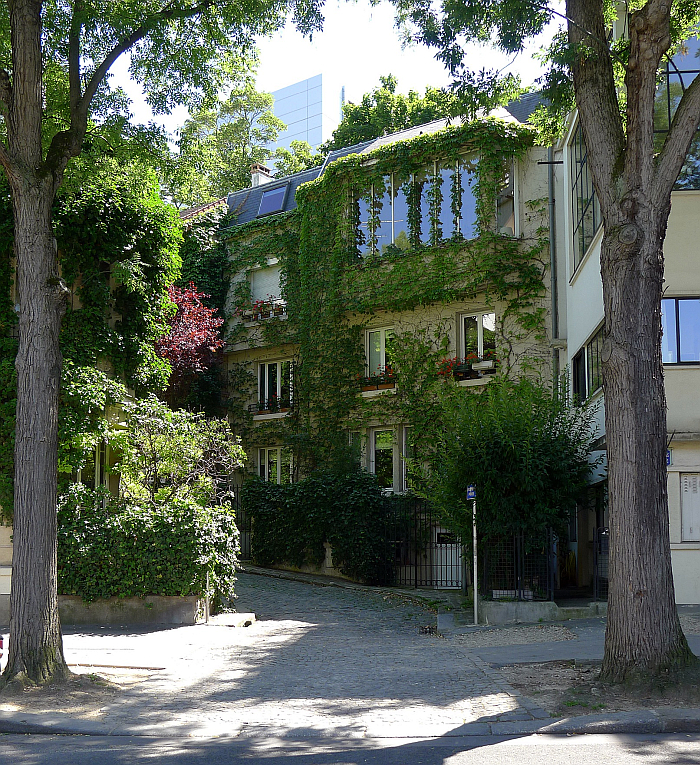
Born on April 15th 1886 in Saint Quentin, France, Amédée Ozenfant studied painting in Paris, and where, in the late-1910s, he co-established the artistic movement Purism, a movement arising as a response to criticisms of Cubism, and a movement co-established with the, then, Charles-Edouard Jeanneret, the, future, Le Corbusier, and thus with that creative with whom Amédée Ozenfant is most commonly popularly associated. An association which although important for the development of the careers of both, was, relatively, short in context of the careers of both, and ended, relatively, acrimoniously.
Beyond his own painting, in many regards more important than his own painting, is and was Amédée Ozenfant's work as an author and teacher: the latter seeing him operate art schools in first Paris, then London and subsequently New York; the former, again most popularly associated with Le Corbusier, with whom Ozenfant both co-published two art history/theory books and also co-published the culture review L'Esprit Nouveau, for which the pair realised numerous joint and solo texts. Ozenfant was however also active as an author in his own right, including publishing a series of six articles in the magazine The Architectural Review between January and August 1937; six articles published under the title Colour; six articles which each approach the use, importance and relevance of colour in context of architectural design from a different perspective, yet which as a sextet are very much a tight ensemble who synchronise to allow insights into Ozenfant's understandings of not only colour, nor only on the use, importance and relevance of colour in architectural design, but for all on Amédée Ozenfant's understandings of colour as an active, formal and functional entity rather than as a purely passive, decorative addition.....
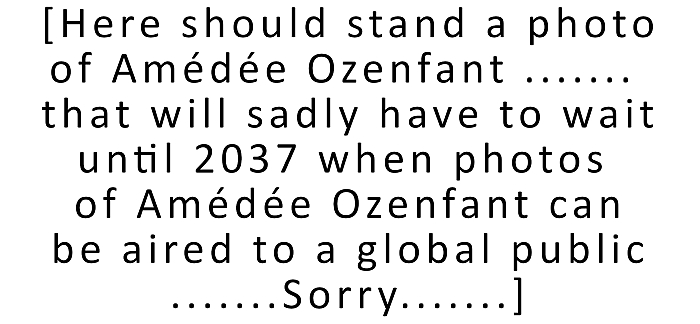
"The experiences of the scientist Charles Henry have shown that colour sensation precedes that of form. The form is always seen by means of colour"2, Ozenfant informs his readers, whereby one suspects his emphasis on scientist was to ensure that his readers understood the infallibility of the argument; the scientist being an important figure in the developments of the late 19th/early 20th centuries, in the establishment of Modernism, being as they were that group who allowed for an unquestionable, inarguable, basis for the new, something more tangible and verifiable than the dreams and visions of artists. And while Henry was a scientist in terms of librarian rather than chemist or physicist, he was professionally active across a range of scientific disciplines; was a scientist who in 1888 had published his Cercle Chromatique, a tool for, amongst other tasks, improving colour harmonising; and not unimportantly, was a scientist closely related with developments in painting in France/Paris in the late 19th/early 20th centuries, for all in context of developments in understandings and use of colour. And a scientist who in 1921 had published a series of four articles in L'Esprit Nouveau under the title La lumière, la couleur et la forme3; a quartet of articles which, in many regards, can be considered the precursor of Ozenfant's sextet; articles which go into excruciating detail about what light is and how it functions; articles penned while Henry was Director of the Sorbonne's Laboratoire de Physiologie des Sensations, Physiology of Sensations Laboratory, which helps underscore that his research was on more than colour as a physical and chemical entity; and articles which judging by the similarity of Ozenfant's and Henry's vocabulary left a lasting impression on Ozenfant. A lasting impression which clearly inspired and motivated Ozenfant to consider the subjects involved in more detail; considerations that caused Ozenfant to remark in 1937 that, it is "a pure abstraction when one refers to form without thinking of colour simultaneously", for "colour always modifies the form to some extent", and also, "certain forms do not permit the use, architecturally, of certain colours" and thus leading one to the unavoidable conclusion, that "colour is an essential element of architecture."4
An inextricable relationship between colour and architecture which, for Ozenfant, meant colour ought to be "thought out and decided exactly and rigorously at the same moment as the creation of the first idea. It ought to be thought of and decided absolutely in accordance with the form".5
Yet, rarely was, and thus opined, Ozenfant further, "it is a matter of fact with modern architecture it is very seldom that the colour solutions are worthy of the forms ", and only "very rarely is it truly organic. That is to say, giving the impression of being an integral part of the architecture"6, illustrating his point with a most satisfying metaphor of a craftsman weaving a carpet in white and then painting it, rather than weaving in coloured wools.
A reality for which Ozenfant understood architects as, primarily, responsible, both actively so, and also more passively so.
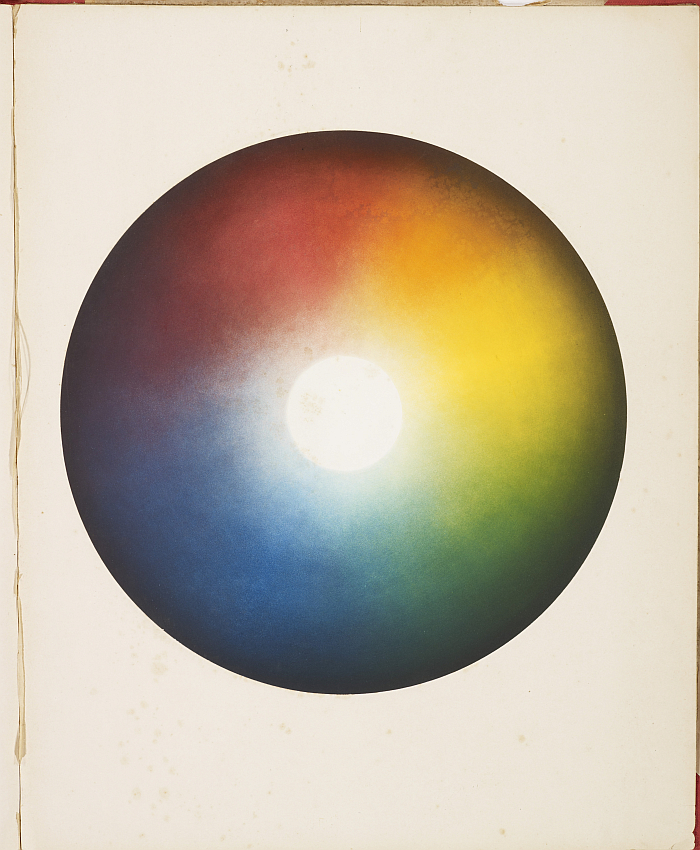
In context of the latter, Ozenfant is critical of what he perceived as serious deficits in architects' training: "in schools of architecture there is practically no attention given to colour problems", he bemoans, and when there is, then, in contrast to the "method, laws, tables" of "planning, materials, strength calculations" colour "is left entirely to the architect's sensibility. It is all completely empiric. It is all haphazard", and architects thus tended to colour their "plans or projects with water-colours or crayons, and these fantastic and abstract colours have usually no relation to those put on the walls".7 For Ozenfant the result of this empiric, haphazard, unrealistic and unmethodical training, coupled to the fact that few architects "have spent the necessary time acquiring the habit, by reasoning and experience, of foreseeing more or less the colour which will result from the mixing of different powders"8, is that when considering colour, architects invariably drift into vagueness, invariably arrive at "a rose "like that"", ""a yellow not too yellow"", "a colour which is sometimes felt, but hardly ever defined, even in the mind of the architect".9 And even more rarely attained, so vague is the architect's perception of it. Or, and "much worse", during the process of trying to create the poorly defined colour, "a pleasant tone is produced by miracle", and while not the colour the architect was looking for, they decide to use it, "the original idea has been abandoned and architecture is again the result of chance .... architecture is the outcome of miracles."10
"Do you believe in miracles in architecture?" he asks.11
Amédée Ozenfant doesn't. And certainly doesn't approve of such.
Help however was at hand, thanks to the scientist and that other great panacea of the early 20th century, standardisation. And specifically the development by the scientist of standardised colour systems. Ozenfant illustrating his understanding of the necessity of standardised colour systems via a musical analogy very similar to that which Le Corbusier would later use in his definition of the Modulor standardised proportion system: "the ancients perfectly understood that it is only possible to play in tune on an instrument which is itself in tune, and not too complicated. The admirable piano only has 96 keys, and that is already a great deal."12
For Ozenfant the first attempt at such a standardised colour system, the first attempt to reduce the magnitude of possible hues to an uncomplicated, playable, keyboard, to create a "practical working method" with colour was Eugène Chevreul's Cercle Chromatique13, a scale of 72 colours developed in the 1830s for use at the Manufacture nationale des Gobelins tapestry works, of which, the chemist, Chevreul was, at that time, Director, and which was intended to help with the preparation and use of dyes for the Manufactures tapestries. To take not only the guess work out of colour mixing, but also to avoid any and all temptation if "a pleasant tone is produced by miracle".
A first "practical working method" which, for Ozenfant, had been ceded in the 20th century by "the first practically usable working tool for colour": The Ostwald Chart.14
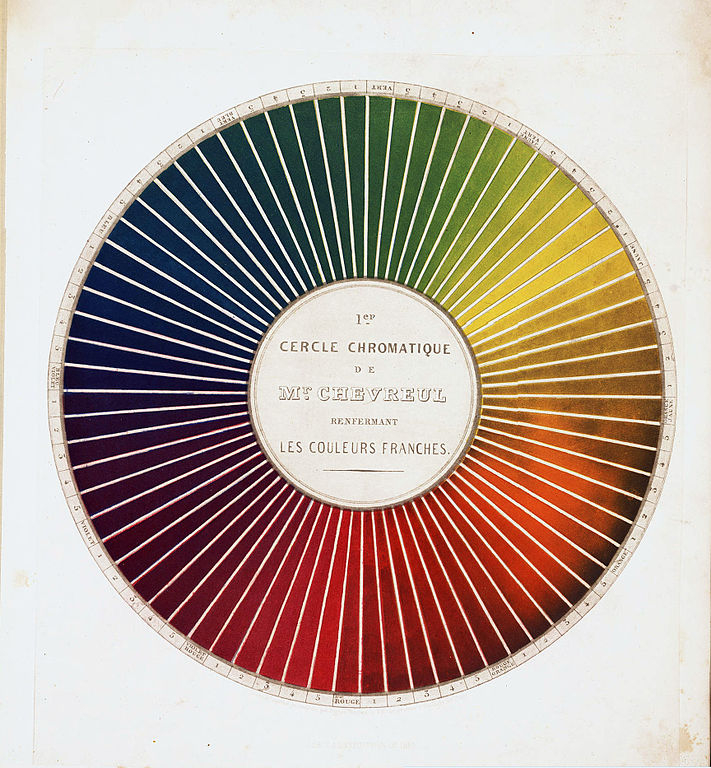
Born in Riga, Livonia, in 1853 Wilhelm Ostwald studied chemistry in the contemporary Tartu, Estonia, and subsequently undertook numerous academic posts before in 1887 being appointed Professor of Physical Chemistry at Leipzig University where he remained until his retirement in 1906, and where he undertook much of his most important research in that still relatively new discipline. Following his retirement, one notes aged just 53, Ostwald remained in the vicinity of Leipzig and remained active as a research chemist, undertaking for all research into colour; research which, as Ozenfant argues, saw him apply the advances in chemistry since the 1830s, the advances in science since the 1830s, to Chevreul's theoretical approach, and thereby develop in the 1910s a double cone concept which, and skipping over the gorier details, through the inter-mixing of 24 selected colours with a range of greys allows for the notation and presentation of "a series of hues sufficiently numerous to identify all the perceptible hues" and "forming practically continuous ranges".15
And a standardised colour system of which Amédée Ozenfant was a glowing fan.
For all a glowing fan of the way the Ostwald Chart increased the precision when working with colours: each of the colours on the Ostwald chart has its own unique number, thus, an architect can say to the paint supplier we want, for example, 31c or 2ca or 21ng or whatever, and the paint supplier knows exactly what is required, and for all how to mix it.
And while, yes, that sounds all very familiar, in the early 20th century, it wasn't, in the early 20th century it was new, was almost revolutionary, was without question a development of fundamental importance to the burgeoning industries of that period; and a development Ozenfant understood as of equal fundamental importance in context of architectural design.
If a development in architectural design which, certainly in the form of the commercially available Ostwald Chart, had, for Ozenfant, one serious shortcoming: "the samples are very small - about one square centimetre each".16 And thus of a scale essentially meaningless for architecture.
However, Ozenfant announces cheerily, "we can suggest a way of improving it": an ""architectural chart"".17 Essentially the Ostwald Chart reduced down to circa one hundred hues, a piano keyboard if one will, albeit presented on panels "six foot by three foot", which could be hung in situ, and which as such would take the guess work out of selecting and mixing colour in context of architectural design.18
"I do not think that there can be one architect who will fail to realize the tremendous advantages which would result for the profession from the establishment and use of such an "architectural chart"", opines Ozenfant, before, almost immediately, contradicting himself, "I am fully aware that the idea of any standardization is always accepted with great difficulty by architects"; however, "lack of precision in colour is fatal to architecture. There is no possible precision without some means of checking"19
"Music lost nothing by being written down, in figures, notes and scales", he adds in a continuation of the Le Corbusier/Ozenfant analogy.
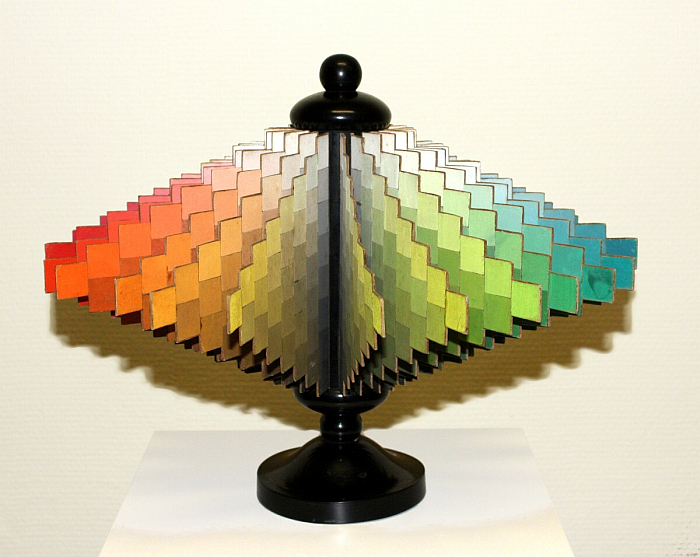
While the contemporary lack of colour training and contemporary problems in defining and mixing colours caused problems for architects not directly of their making, caused for a vagueness in the design of colour not directly of their making, for Amédée Ozenfant other problems in context of architecture, design, colour and vagueness, were very much of the architects' own making.
Ozenfant's sextet of articles, effectively, start and end in the late 1930s London in which he found himself, and for all start and end in that late 1930s London in context of, and through reflections on, previous, historic, Londons and the practices of generations past, practices of which Ozenfant very much approves, and very much misses in the late 1930s London in which he found himself.
Not that Amédée Ozenfant should be confused for a conservative traditionalist: "dismiss the idea of preaching a perpetual imitation of the past, a timidity in face of the new", he admonishes his readers, "long live the new as long as it will thrive, and long live tradition! But tradition which is enriched; which looks for something new within its range".20
For all that the scientist was the guarantor of the future, for Ozenfant it was also important to learn lessons from the past, to understand the hows, whys and wherefores of the past, for all the hows, why and wherefores of any given location, specifically in Ozenfant's case London.
Not that Amédée Ozenfant should be confused for "the petty regionalist, whose ideal is to produce the imitation-antique-local", far from it, but for Ozenfant it was important not to "neglect local conditions" and to understand that in any given locality, "particular circumstances must be taken into account".21
Which, and in context of his main theme, was primarily the English weather, and London's light, unavoidable realities, (near) unique local conditions, which required of architects location specific considerations on materials and colours, only then could one develop meaningful solutions, only then could one develop colour solutions worthy of the forms.
Something Ozenfant believed previous generations had understood, but by the late 1930s, "the tradition of old British builders has been forgotten or betrayed".22
And that not just by Modernist inclined architects with their unreflective application of international standards on local conditions, who, as Ozenfant accuses them, build in England as if it was Greece, who build "in any material, and then applies to the facades a whitish pseudo stone facing; and the trick is done: ""it's white, so it's modern" - not quite good enough"23; but also more traditionally inclined architects were, for Ozenfant, guilty of building without the regard for the peculiarities of the English climate and London's light with which their forbearers had progressed. And that in context of their choice of materials, their use of those materials and also on their sparing use of colour, ineffectual combination of colour, and for all what Ozenfant bemoans as a waning use of both the strong and the delicate colour ranges he considered not only particularly English, but particularly well suited to the vagaries of climate and light, and which were increasingly being replaced with "mediocre colours; neither delicate nor strong, and often detestable".24
The result was a city populated by "uniform blocks of brick or stone, new and disgustingly dirty".25
Which, yes, does sound familiar.
Yet for Ozenfant the solution was relatively simple, "in 90 per cent of cases it is only a matter of re-establishing what already existed there", he opines, and in many regards his sextet of articles can be read as an appeal, and argument, for just that. Again not on account of a conservative regionalist traditionalist perspective, but on a belief that meaningful, good, architectural design can only arise from understanding and responding to local realities and from lessons learned from local tradition. Not from an internationalist one-size-fits-all approach.
Something he understood as globally applicable and of which late 1930s London was but an example, "let us first see how much beauty can be extracted from existing towns", he notes, "from the lessons we learn we will infer what is desirable for the new town which is to be built". By which he meant to be built in the "immediate future", "let us leave it to the H. G. Wells of architecture to trace the outline of ideal towns, to sketch a hypothetical Paris or London of the year 3000", he advises.26
Which, yes, does sound like an implicit criticism of Le Corbusier. As noted, their parting of ways was acrimonious.
If, as also noted, and reading Ozenfant's articles can help one appreciate, before that acrimonious parting of ways, their cooperation was important for the development of the careers' of both.
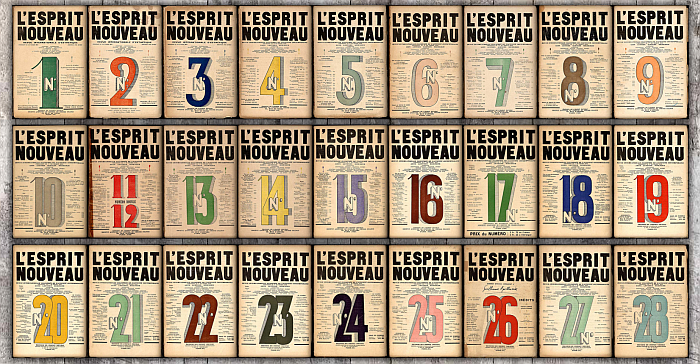
"I feel proud", Ozenfant pronounces, "that the Review "L'Esprit Nouveau" which le [sic] Corbusier and I founded in 1920 and managed until 1925, contributed to this great clean-up"27, contributed to what he refers to as "the vacuum cleaning movement", of a correction of the vagaries and excesses in architectural and artistic practice in the immediate post-Great War years, including, on the part of architects, a "failure to understand the rôle [sic] of painting" and which led to the blithe acceptance of bare, unpainted, walls in homes, something that for Ozenfant "is too much of a step back to antiquity, and contrary to complete "functionalism" to accept (and what is more serious to want) unbearably monotonous sitting-rooms".28
And while one can and should query Ozenfant's understanding of L'Esprit Nouveau in the (hi)story of art, architecture and design, in his criticism of the more dogmatic approaches to Functionalism Amédée Ozenfant reveals himself as a (relatively) early adopter, of what would become increasingly commonplace in the course of the 1950s and 1960s: "why restrict the function solely to physical needs?"29 he asks in August 1937. Why indeed?
Ozenfant (primarily) asks in context of an argument for greater use of murals in interior architecture, murals, one presumes, he was hoping to be commissioned to paint; however, the question is in many regards one that runs through his sextet of articles.
Articles which for all they discuss at great length physical and chemical aspects of colour focus very much on the psychology of colour, on how colour is perceived, how we react to colours, and why that is important. And while very much against the unstable hues that are so important to a Hella Jongerius, Amédée Ozenfant is very much in favour of understanding, and employing, the natural visual instability of colours, for all the "mutual changes apparently produced on each hue, by the vicinity of other hues", and is also very much in favour of contrast, for Ozenfant "a fundamental law in all art", that aspect which, one gets the feeling, he misses most in late 1930s London, where "the so-called traditionalists, and many moderns, have forgotten this great lesson of necessary contrast"; necessary because for Ozenfant, "our attention must be periodically aroused by our senses, so that it does not become inattentive and bored". Or as the 18th century author Antoine Houdar de la Motte phrased it, "one day boredom was borne of uniformity".30
"I do not know whether others are like myself", he asks by way of an extended appeal, "but these last few months I have been longing for rainbows. The walls of London rather remind you of wet weather. Let us make rainbows shine on them".31
Albeit, as one understands by this point, rainbows in hues appropriate for the realities of late 1930s London, and developed in an ordered, systematic, manner, with the assistance of both tradition and the scientist.
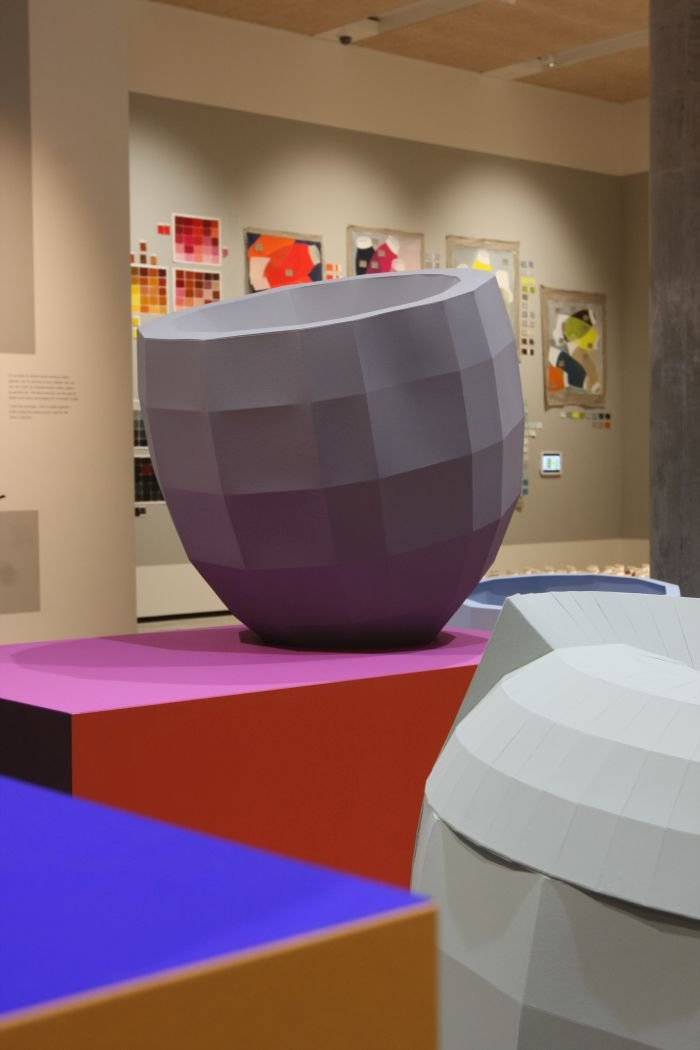
Alongside his deliberations Amédée Ozenfant also includes a number of more textbook-esque illustrations of that on which he deliberates, if one so will, practical illustrations of that discussed in theory, including, for example, a description on his use of coloured curtains as temporary, interchangeable, internal walls/room dividers in his London home, on how colour can be used to optimise and/or correct deficiencies in light, or presenting a theoretical colour scheme for a theoretical London flat based on his methods and understandings, and the Ostwald Chart, and which help round the deliberations. And which in their reasoned methodology and scientific foundation are anything but vague.
In addition, and as is almost a legal requirement in any text on colour, Ozenfant lists various characteristics he considers intrinsic to specific colours, for example that "blues become apparently darker according to the increase in distance", "for red, exactly contrary to blues, distance brightens them", "our eye rests naturally on yellow" or that "the violets are the most "destructive" colours there are".32 Amédée Ozenfant, as one understands from perusing his articles, without ever fully understanding the why, had a near pathological dislike of violets.
A passionate dislike of violets reminiscent of Verner Panton's passionate dislike of white, a colour that in contrast, pun very much intended, Amédée Ozenfant is particularly partial to: while for Panton white paint should be subject to a special tax, for Ozenfant, "from the aesthetic point of view it might almost be said that there cannot be too much white in a room", white serving for Ozenfant as an important component of the necessary contrast, inside and out, as a "silence to hear the music of colours".33
There are an awful lot of musical analogies in the Ozenfant sextet.
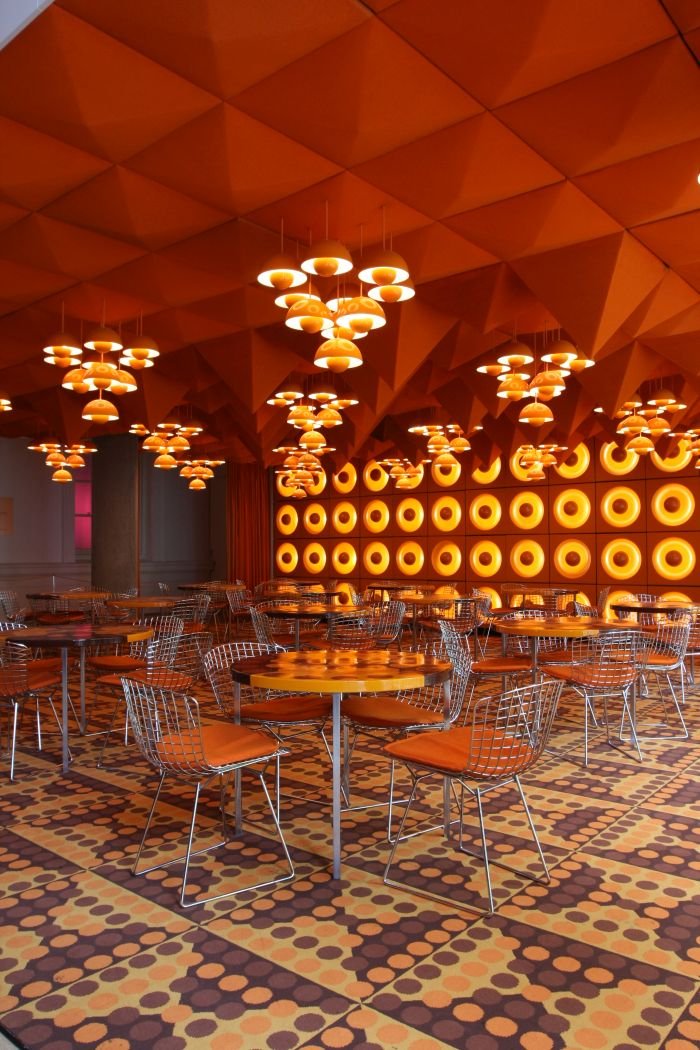
Among the many aspects that are striking in Amédée Ozenfant's Architectural Review texts is that for him architects are, naturally, self-evidently, responsible for the interior and exterior design of a building, he takes very much a Gesamtkünstler approach, and indeed there are also couple of mentions of furniture and the errors one can make with such.
As we all know, since 1937 the design of interiors and exteriors have increasingly become separate functions, certainly in context of colour, and while there is in many regards nothing to bemoan in such a separation, if one follows Ozenfant's arguments, which one doesn't have to, but if one does, one arrives at an understanding not only of the importance of developing the internal colour scheme in unison with the building, that one must weave in coloured wools not paint a white carpet, but also that should any subsequent changes be made to the interior of a building the colour scheme should, must, be reconsidered, and adjusted, as a component of the planning, for the effect and contribution of the colour in and to the space, will, inevitably, change. But how often does that happen? For all in buildings where a corporate identity needs to be uniformly presented?
A further striking feature is that while much of that which Amédée Ozenfant discusses in context of the physics and chemistry of colour is well-known today, it clearly wasn't 't then. An understanding which, aided and abetted by the way Ozenfant sets his discussion in context of the work of Eugène Chevreul, Charles Henry and Wilhelm Ostwald, allow the articles to enable one to approach a better appreciation of how our contemporary colour industry developed, how our standardised colour systems developed, how our commercially available ranges of colours developed, how the thinking and understandings of the late 19th/early 20th century continue to define our approach to the selection and production of colour in the 21st century. And what that has meant over the decades by way of compromise in terms of our selection and production of colour, the degree to which the scientific and the rational have drowned out the emotional and empirical. While the psychology has remained largely unchanged. Is that logical?
But perhaps the most striking feature is how much of that which Ozenfant criticises and cautions remains most contemporary, be that, for example, a widespread use of t**** colours for interiors, regardless of context; of a lazy transfer of colours from one locality to another rather than a transfer of principles; of a thinking in terms of colours rather in terms of interactions and inter-relationships; or a lack of sensitivity to the contribution of new buildings to the cityscape, Ozenfant raging against an increasing number of "enormous, monotonous buildings where nothing catches the eye", "desperate buildings where not a single bright and clear note enlivens the miserable waste".43
Which, yes, does sound familiar.
Or put another way, which was the last new building you saw in colour?
"L'ennui naquit un jour de l'uniformité"35, "one day boredom was borne of uniformity".
Amédée Ozenfant reminds us that it needn't be. That that day can be avoided, permanently delayed. And that he reminds us of that in a call from the past is very fitting, for that is what he did in 1937, reminded his contemporary audience that for all the value of revolution, evolution is critical, that we need to learn from that which preceded us not attempt to supersede it. In our use of colour as with every aspect of our lives and societies.
Thus all the more the pity that the articles aren't so freely available, for as a sextet they provide an accessible and readily comprehensible framework for more nuanced and reflective considerations on the use of materials and colour in exterior and interior architecture; on being aware of the context in which one is working; on flora, advertising and signage as integral components of the colour of an urban space; on the responsibility of architects to create buildings and spaces that are more than purely physically functional, that architects must develop buildings and spaces that are also emotionally and psychologically functional. And that requires a deliberate and considered, and well founded, use of colour.
1Amédée Ozenfant, Colour - The English Tradition, The Architectural Review, Vol 81, Issue 482, January 1937
2ibid
3see L'Esprit Nouveau issues, 6, 7, 8 & 9 1921 accessible via http://arti.sba.uniroma3.it/esprit/ (accessed 13.08.2021)
4Amédée Ozenfant, Colour - The English Tradition, The Architectural Review, Vol 81, Issue 482, January 1937
5ibid
6ibid
7ibid
8Amédée Ozenfant, Colour and Method, The Architectural Review, Vol 81, Issue 483, February 1937
9ibid
10ibid
11ibid
12ibid
13ibid
14ibid
15Amédée Ozenfant, Colour. Experiments, Rules, Facts The Architectural Review, Vol 81, Issue 485, April 1937
16ibid
17ibid
18At this juncture one must also add that while Ozenfant discusses Chevreul, Henry and Ostwald's colour system, in the early 1930s Le Corbusier developed a colour system specifically for architecture, his Polychromie Architecturale. That Ozenfant doesn't mention Polychromie Architecturale being, one presumes, related to the pair's acrimonious parting of ways in the late 1920s. But we no know. We will however come back at another juncture to a comparison of Ozenfant's arguments and opinions as discussed in The Architectural Review and those of Le Corbusier.......and will merely note here that Polychromie Architecturale is missing. And that very obviously so.
19Amédée Ozenfant, Colour. Experiments, Rules, Facts The Architectural Review, Vol 81, Issue 485, April 1937
20Amédée Ozenfant, Colour - The English Tradition, The Architectural Review, Vol 81, Issue 482, January 1937
21Amédée Ozenfant, Colour. In the Town, The Architectural Review, Vol 82, Issue 488, July 1937
22ibid
23ibid
24Amédée Ozenfant, Colour - The English Tradition, The Architectural Review, Vol 81, Issue 482, January 1937
25Amédée Ozenfant, Colour. In the Town, The Architectural Review, Vol 82, Issue 488, July 1937
26ibid
27Amédée Ozenfant, Colour. Pro Domo The Architectural Review, Vol 82, Issue 489, August 1937
28Amédée Ozenfant, Colour. In the Town, The Architectural Review, Vol 82, Issue 488, July 1937
289 ibid
30Antoine Houdar de La Motte, Les amis trop d'accord in Fables nouvelles, Paris, 1719, quoted and translated by Amédée Ozenfant in Colour. In the Town, The Architectural Review, Vol 82, Issue 488, July 1937
31Amédée Ozenfant, Colour. In the Town, The Architectural Review, Vol 82, Issue 488, July 1937
32Amédée Ozenfant, Colour. Solidity, The Architectural Review, Vol 81, Issue 486, August 1937
33ibid
34Amédée Ozenfant, Colour. In the Town, The Architectural Review, Vol 82, Issue 488, July 1937
35Antoine Houdar de La Motte, Les amis trop d'accord in Fables nouvelles, Paris, 1719
But for all Ozenfant's sextet provides a framework for understanding the very real need for each and everyone of us "to escape from this vagueness in the design of colour".